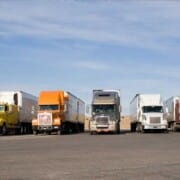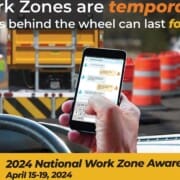The Real Cost of Smaller Truck Accident Settlements and Verdicts
Mitigation Strategies for Trucking Companies
The trucking industry is facing an escalating issue that goes beyond just nuclear verdicts – the increasing number of smaller truck accident settlements and verdicts. These settlements, although smaller in comparison to nuclear verdicts, are steadily rising and causing significant financial strain on trucking companies.
- Impact on Trucking Companies: The impact of these settlements on the trucking industry is multifaceted and extends beyond the immediate payout. For starters, the monetary payouts for these settlements, although smaller relative to nuclear verdicts, are substantial enough to cause significant financial stress for trucking companies. Even smaller truck accident settlements can amount to hefty sums when accumulated over time.
- Time and Resources: The time spent in court for these cases is also a major concern. Litigation could last months or even years, leading to lost productivity and operational inefficiencies. This lost time is an additional cost that trucking companies have to bear, impacting their bottom line.
- Rising Insurance Rates: In the aftermath of these truck accident settlements, insurance rates for trucking companies are seeing a significant rise. Insurers, facing increased payouts, are hiking premiums to cover their costs. This increase in insurance rates is another financial burden that trucking companies have to bear, further straining their financial resources.
- Potential Solutions: Addressing the issue of rising truck accident settlements requires a comprehensive approach. This could include improved driver training, implementing advanced safety features in trucks, and lobbying for fairer legislation.
Examples of Truck Accident Settlements
To illustrate the problem, let’s consider some examples of recent truck accident settlements:
- In 2018, a trucking company in Texas settled a case for $1 million after a truck driver fell asleep at the wheel, causing a serious accident.
- In 2017, a Californian trucking company paid out $2.8 million in a truck accident settlement involving a fatal crash caused by a distracted truck driver.
These examples highlight the severity of the issue at hand. They underscore the urgent need for measures to reduce the occurrence of such incidents, thereby reducing the number of truck accident settlements and the associated costs for the trucking industry.
While nuclear verdicts are a significant concern, the rising number of smaller truck accident settlements should not be overlooked. The combination of payout costs, lost time in court, and rising insurance rates is a potent mix that is putting a considerable financial burden on trucking companies. It is vital for the industry to actively work on mitigating these challenges.
About Infinit-I Workforce Solutions
Infinit-I Workforce Solutions, a family-owned business since 1999, has delivered over 160 million training sessions to more than 5,000 companies. The Infinit-I online safety training platform (LMS) continues to provide innovative and effective training solutions for transportation, warehousing, distribution, and beyond.
Infinit-I Workforce Solutions offers comprehensive truck accident defense training to help transportation companies protect themselves against potential lawsuits. The Ultimate Defense program, created by transportation defense attorney Stephen Setliff, provides crucial knowledge and tools for companies to implement before, during, and after accidents occur.
Key features of the program include:
- Expert content covering proactive measures and post-accident procedures
- Online delivery system for easy access by employees
- Real-time reporting for accountability
- Digital accident checklists for drivers and companies
- Training on evidence collection and preservation
With the increasing frequency of “nuclear verdicts” in the trucking industry, this program aims to equip companies with the necessary skills and knowledge to mitigate risks and defend themselves effectively. By investing in this training, transportation companies can better protect their assets, reputation, and long-term sustainability in an increasingly litigious environment.
The Cost of Smaller Truck Accident Settlements and Verdicts
Key points covered in the document include:
- The rise in smaller truck accident settlements and verdicts, which are significantly costing the trucking industry.
- These costs are not just limited to the settlement payouts, but also include the time lost in court and the subsequent increase in insurance rates.
- The document also mentions the concept of “nuclear verdicts”, which are extremely high jury awards in lawsuits. However, it emphasizes that these are not the only financial burdens on the industry.
- It provides a detailed analysis of various factors related to the litigation process, including the types of injuries claimed, alleged infractions, and the evidence used against the defendants.
- It also highlights the difference in payment sizes based on whether a case is settled or concludes with a verdict.
Expanding on these points, the document provides several insights:
- Increase in Smaller Settlements and Verdicts: Over time, there has been a significant increase in the number of smaller truck accident settlements and verdicts. These cases may not attract as much attention as the more headline-grabbing nuclear verdicts, but their cumulative financial impact on the industry is substantial.
- Cost Implications: The financial implications of these settlements extend beyond the immediate payout. There is also the time and resources spent on court proceedings to consider. Further, these cases often lead to an increase in insurance premiums, adding to the overall cost burden on trucking companies.
- Detailed Analysis of Litigation Factors: The document provides a comprehensive analysis of various factors involved in litigation. This includes an examination of the types of injuries claimed in the lawsuits, the alleged infractions by the trucking companies and their drivers, and the evidence brought against the defense. This analysis provides valuable insights into the litigation process and the factors that can influence the size of the settlement or verdict.
- Settlements vs. Verdicts: The document also illustrates that the size of the payout can vary significantly depending on whether a case is settled or goes to a verdict. This highlights the importance of strategic decision-making in the litigation process.
While nuclear verdicts often dominate discussions about the financial challenges facing the trucking industry, it is crucial to also consider the impact of smaller truck accident settlements. These settlements, while less dramatic, are increasing in frequency and collectively pose a substantial financial burden on the industry.
The Negative Perception of The Trucking Industry
The trucking industry is currently grappling with the challenges of a negative public perception, with truck companies, even smaller ones, being viewed as large corporations that exhibit little concern for the average person. This perception has a significant influence on the increase in smaller truck accident settlements and verdicts, with the latter usually falling under the $1 million mark.
- Key Points:
- Public Perception: A prevailing negative image of the trucking industry fuels the perception that these businesses, irrespective of their size, are indifferent to the plight of the average person. This perception puts the industry under scrutiny, leading to tighter industry restrictions.
- Impact on Settlements: This unfavourable perception has a direct impact on truck accident settlements. Even minor accidents can result in substantial payouts, often up to five times the cost of the accident to the victim. These settlements are typically below $1 million, making them attractive to plaintiff attorneys who can process multiple cases simultaneously.
- Role of Plaintiff Attorneys: Many law firms have numerous cases open against trucking companies at one time, some even managing up to 300. Seeking quick settlements rather than going through the lengthy litigation process, they target minor accidents for quicker payouts.
The industry has become an attractive target for plaintiff attorneys, who actively solicit victims of trucking accidents to file claims with their firms. These attorneys are not deterred by minor accidents; on the contrary, they are drawn to them as they often result in quicker settlements compared to the lengthy litigation process. Consequently, companies often find themselves paying settlements that are several times the actual cost of the accident to the victim.
- The Surge in Cases: Plaintiff attorneys can handle multiple cases due to the relatively smaller size of these settlements. Some firms even have as many as 300 cases open against trucking companies simultaneously.
- Soliciting Victims: Many of these attorneys actively reach out to trucking accident victims, encouraging them to file claims to further increase the number of cases against trucking companies.
- The Appeal of Quick Settlements: Instead of going through the lengthy and often complex litigation process, these attorneys prefer to seek settlements. This approach often results in companies paying out settlements that are disproportionately larger than the actual cost of the accident to the victim.
The trucking industry’s negative perception has led to an increase in smaller truck accident settlements, further compounded by the strategies adopted by plaintiff attorneys. These attorneys exploit the situation by processing multiple cases concurrently, actively soliciting victims, and seeking quick settlements rather than pursuing litigation. This trend has significant financial implications for trucking companies, often forcing them to pay out settlements significantly larger than the actual cost of the accident.
What Leads to the Highest Payout on Smaller Verdicts?
The American Transportation Research Institute (ATRI) has conducted a study on truck accident settlements and verdicts, particularly focusing on the ones that fall under $1 million. This research has brought some vital insights to light regarding the factors that result in higher average payouts.
Poor driver history tops the list as the cause leading to the highest average payout. This is followed in sequence by phone use, hours of service violations, falling asleep at the wheel, and equipment failure. The average payouts for these causes are as follows:
Average Litigation-Related Payment by Evidence Brought Against the Defense
|
Average |
Total |
Min |
Max |
|
|
Poor Driver History |
$680,333 |
$4,082,000 |
$185,000 |
$985,000 |
|
Phone Use |
$629,375 |
$5,035,000 |
$410,000 |
$750,000 |
|
Asleep at the Wheel |
$543,343 |
$4,346,743 |
$150,000 |
$850,000 |
|
Uncategorized |
$517,438 |
$4,656,946 |
$207,500 |
$750,000 |
|
Equipment Failure |
$503,641 |
$12,087,386 |
$40,000 |
$926,053 |
|
Recklessness |
$493,673 |
$5,924,071 |
$35,000 |
$963,541 |
|
Left the Scene |
$490,613 |
$5,396,746 |
$57,600 |
$830,000 |
|
Failure to Yield / Slow/ Stop |
$470,462 |
$36,225,594 |
$20,000 |
$980,000 |
|
Speeding |
$464,920 |
$20,921,383 |
$32,379 |
$999,000 |
|
Secondary Crash |
$462,097 |
$11,552,416 |
$80,000 |
$950,000 |
|
Improper Turn |
$457,316 |
$25,152,355 |
$13,200 |
$995,173 |
|
Blocking |
$441,699 |
$4,858,688 |
$9,004 |
$900,000 |
|
Improper Driving for Conditions |
$432,926 |
$10,823,157 |
$50,000 |
$975,000 |
|
Rear End |
$428,507 |
$47,564,279 |
$6,781 |
$965,000 |
|
Improper Lane Change |
$420,409 |
$45,824,631 |
$6,463 |
$985,000 |
|
Vicarious Fault |
$395,265 |
$8,300,575 |
$107,500 |
$775,390 |
|
Inadequate Training |
$388,464 |
$2,719,246 |
$200,000 |
$720,975 |
|
Sideswipe |
$385,986 |
$6,561,758 |
$25,000 |
$981,328 |
|
Controlled Substance Use |
$384,161 |
$1,536,644 |
$107,500 |
$662,109 |
|
Distracted |
$380,334 |
$4,944,345 |
$80,000 |
$990,000 |
|
Improperly Secured Cargo |
$378,840 |
$4,167,235 |
$65,000 |
$900,000 |
|
Work Zone Violation |
$352,894 |
$3,176,050 |
$16,500 |
$725,000 |
|
Backing |
$352,684 |
$4,232,205 |
$10,700 |
$900,000 |
|
Following too Closely |
$339,977 |
$4,759,677 |
$32,379 |
$900,000 |
Source: American Transportation Research Institute
It’s important to note that each of these causes can be traced back to negligent hiring or training practices. As such, juries tend to hold trucking companies accountable for the mishaps their drivers cause on the road. This accountability leads to the higher payouts made to victims and their corresponding law firms in truck accident settlements.
However, accident causes are not the only factors that influence the size of the settlement. Geographic location also plays a significant role. For instance, states like California, Michigan, New Jersey, and North Carolina have the largest national averages for verdicts. This suggests that victims in these states can generally expect to receive higher settlements.
The severity of injuries sustained in the accident is another crucial factor that can dramatically increase the size of a payout. Severe injuries and fatalities often lead to settlements rather than verdicts, with the settlement costs tending to be 37.7% larger than verdict sizes in a truck accident case. The reason for this trend might be the inherent desire of parties involved to avoid the unpredictability of a jury verdict, especially when the injuries are severe.
The ATRI study has illuminated several key factors that influence the payout size of truck accident settlements under $1 million. These factors include the cause of the accident, the location of the accident, and the severity of the injuries sustained. Therefore, these are aspects to consider when negotiating settlements in truck accident cases.
Detailed Analysis of Factors Influencing Truck Accident Settlements
The ATRI Impact of Small Verdicts document is a comprehensive report on the impact of small verdicts and settlements on the trucking industry. It includes deep analysis of payment sizes, injury types, alleged infractions and litigation factors that influence the amount of settlements in truck accident cases.
Key Findings:
- The distribution of payments is approximately even for most injury types. However, outliers skew the data in the direction of the mean for injury types where mean and median differ, such as death and organ injuries.
- Median is the more representative metric in cases where average payments are high. For example, in death, organ, or rib injuries – the injuries with the highest average payments – 75% of cases resulted in payments greater than $418,750, $331,250, and $325,000, respectively.
- There is a significant correlation between injury types and the size of the litigation-related payment.
- No significant relationships were found between certain injury types and alleged infractions, possibly due to the qualitative nature of litigation data.
Understanding Settlements:
- The analysis of injury types and alleged infractions clearly demonstrates that certain factors can significantly influence truck accident settlements.
- For instance, the presence of death, severe injuries, negligence, leg injuries, pre-existing conditions, and recklessness all increase the likelihood of a case resulting in a higher payment.
- Conversely, certain allegations such as negligence, can decrease the likelihood of a higher payment.
Expert Witness Analysis:
- The involvement of expert witnesses in truck accident settlements also plays a crucial role.
- When both defense and plaintiff experts are present, the average payment size tends to increase.
- Conversely, when no expert is present or only a defense expert is present, the average payment size tends to decrease.
This report provides crucial insights into the factors influencing truck accident settlements. It underlines the importance of understanding the complexities and nuances of this particular field, from the types of injuries involved in a case, to the role that expert witnesses can play. It sheds light on the intricacies of litigation data and how it can impact the size of settlements. Understanding these details can help stakeholders in the trucking industry to make informed decisions and to better navigate the complex landscape of truck accident settlements.
Protect Yourself with a Solid Safety Training Record
The importance of having a robust and verifiable safety training record cannot be overstated in the context of mitigating truck accident settlements. Companies that prioritize safety and invest in proper training for their drivers are likely to have smaller settlements and verdicts when accidents occur. This is largely due to the fact that a solid safety training record can serve as a testament to the company’s commitment to safety.
Here are some key steps that companies can take to enhance their safety training record:
- Thorough Training in Defensive Driving and CSA BASICS: Defensive driving involves learning a range of skills that can help drivers anticipate and avoid accidents on the road. CSA BASICS, on the other hand, is a safety compliance initiative by the Federal Motor Carrier Safety Administration (FMCSA) that is aimed at ensuring that drivers adhere to safety standards. By ensuring that drivers are thoroughly trained in these areas, companies can demonstrate their dedication to safety.
- Orientation Training: This is the initial training that drivers should receive before they hit the road. It is crucial in preparing them for the challenges that they will face on the job. It should cover all the essential aspects of driving a truck, including vehicle inspection, hours of service regulations, load securement, and dealing with emergencies.
- Regular, Ongoing Training: To keep safety at the forefront, companies should maintain a continuous training schedule throughout the year. This can help reinforce safety best practices and address any weaknesses that drivers may have.
- Corrective Action Training: When issues arise on the road, it is important to address them promptly and effectively. This involves providing additional training to drivers who have been involved in accidents or who have received traffic citations.
- Recordkeeping: Keeping detailed records of all safety training is crucial. Not only can these records serve as evidence of a company’s commitment to safety in court, but they can also be used to demonstrate to insurance providers that the company is a low-risk entity.
A solid safety training record is a powerful tool that can protect companies from large truck accident settlements. By ensuring that drivers are thoroughly trained, addressing safety issues promptly, and keeping detailed records, companies can demonstrate their commitment to safety and reduce the risk of costly accidents.
Online Training Saves Time and Money
In today’s fast-paced trucking industry, safety training is paramount. However, the traditional approach to training can be cumbersome, time-consuming, and expensive. This is where online safety training for small fleets, such as Trucking 52, come into play.
Trucking 52 is an online training management system that simplifies the process of providing ongoing safety training to your team. This system has been designed with the specific needs of the trucking industry in mind, and it offers multiple advantages over traditional training methods.
- Convenience: With Trucking 52, drivers can complete their training at a time and place that suits them. This means you don’t need to interrupt their schedules or pull them off the road for training sessions.
- Efficiency: Trucking 52 is designed to make the training process faster. By delivering the training online, it eliminates the need for physical training materials and reduces the time it takes to complete the training.
- Cost-effective: The system is less costly than traditional training methods. It allows non-fleet companies to access the same level of training as larger companies at a price they can afford.
- Progress tracking: Trucking 52 includes a feature that allows you to track the progress of your drivers. This means you can easily see who has completed their training and who still needs to do so.
- Documentation: Keeping up with necessary documentation is a crucial aspect of safety training. Trucking 52 helps you keep track of all the necessary paperwork, so you always know where your safety training record is.
In the context of truck accident settlements, this training can prove invaluable. Proper training can reduce the likelihood of accidents, and if an accident does occur, having a strong safety training record can help protect your company.
Furthermore, the knowledge and skills gained from such training can help drivers take the right actions in the aftermath of an accident, potentially limiting the severity of injuries and damage, and influencing the outcome of any truck accident settlements.
In conclusion, Trucking 52 offers an efficient, cost-effective solution for safety training in the trucking industry. It allows you to provide high-quality training to your drivers without disrupting their schedules or breaking the bank.
To see how Trucking 52 can transform your safety training program, consider scheduling a free demo of the safety training system. This will give you a firsthand look at the features and benefits of the system, and it can help you make an informed decision about whether it’s the right fit for your company.
FAQs
What factors influence truck accident settlements?
Various factors influence truck accident settlements such as the severity of injuries, negligence on the driver’s part, equipment failure, and violation of traffic rules.
How can negligence be reduced to avoid high settlements?
In-depth training can better equip drivers to handle various driving situations, reducing incidents of negligence.
What is the average settlement for semi truck accident?
The average settlement for semi-truck accidents can vary widely based on numerous factors such as the severity of injuries, negligence, and other specifics of the case. However, they often range from $500,000 to $1 million. Please note that this is a rough estimate and actual settlement amounts can be significantly different.
How can a poor driver history affect truck accident settlements?
A poor driver history can lead to higher settlements. However, ongoing education through a training management system can improve driver performance and safety records, mitigating this issue.
What factors increase the likelihood of a case resulting in a payment larger than $600,000?
Factors such as the occurrence of death or severe injury, negligence, and leg injury increase the likelihood of a case resulting in a payment larger than $600,000.
What types of injuries result in higher average payments?
Cases involving death, severe injuries, leg injuries, and pre-existing conditions result in higher average payments.
What is the correlation between the presence of expert witnesses and the outcome of a case?
The presence of both expert witnesses and defense experts have a moderate significant relationship with verdicts.
What factors might lead to a truck driver being accused of negligence?
Factors such as falling asleep at the wheel, distracted driving, equipment failures, failing to yield/slow/stop, following too closely, making improper turns or lane changes, or speeding might lead to a truck driver being accused of negligence.
How can training improve a driver’s reaction to incidents?
Training equips drivers with the necessary skills to respond effectively to accidents, potentially limiting their severity and subsequent settlements.
How can a training management system help mitigate equipment failure?
Regular training on vehicle maintenance can help drivers identify potential issues before they lead to accidents.
How can a training management system improve a driver’s history?
A training management system provides ongoing education to improve driver performance and safety records, thereby reducing the chance of a poor driver history leading to higher settlements.













